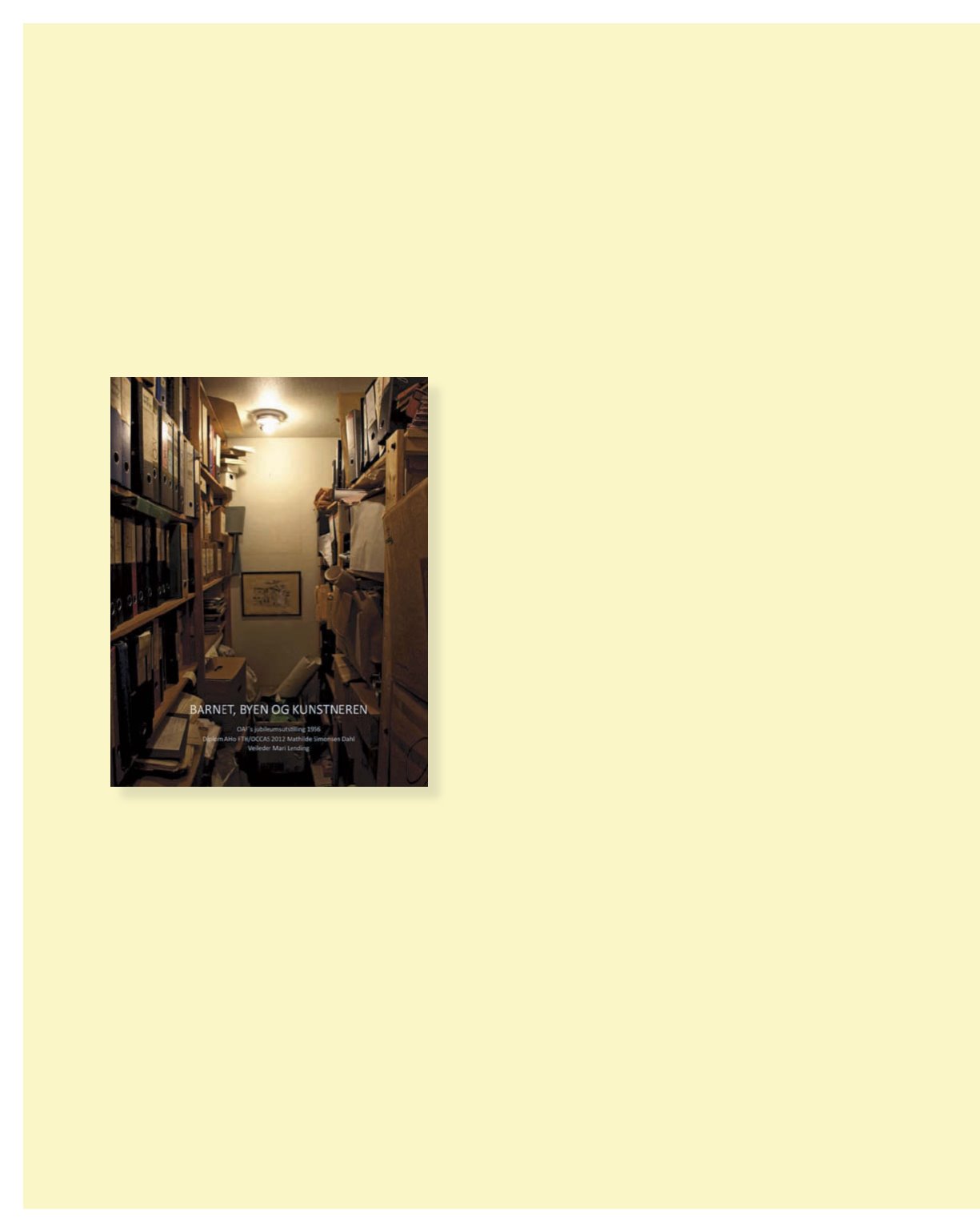
132
133
As part of the research project
Place and Displace-
ment: Exhibiting Architecture
at OCCAS/FTH,
The
Child, the City, and the Artist
examines the 1956 Anni-
versary Exhibition at the Oslo Architect’s Association
and the debate that surrounds it.
The thesis documents the exhibition in the Frogner-
parken, contextualised within the local and interna-
tional architectural debate. First and foremost based
on the archives of the Oslo Architect’s Association—a
closet containing 100 years of unorganized architec-
tural history—the thesis relies on a systemisation of a
wide material of lists, notes, letters, reports plus ex-
tensive newspapers and journal articles of the time
necessary to uncover historical events and the ideas
that formed them. The title
The Child, the City, the Art-
ist
is borrowed from Aldo van Eyck’s famous article,
translated into Norwegian and reprinted in the journal
Byggekunst
in 1969. It alludes to the way in which child
was thematised in the exhibition to point towards a
future where architects would practice their aesthetic
knowledge, developing new ideals for housing and city.
Prior to 1956 Oslo architects worked under strict
governmental regulations to meet the post-war hous-
ing crisis. By 1956 the crisis had decreased and the
architects celebrated by reaching out to the public
in a common claim for quality and beauty as leading
premises for future architectural production. They
insisted that the focus shift from housing to the city.
Architect Arne Korsmo was appointed curator of
the exhibition, in collaboration with leading mod-
ernist painter, Gunnar S. Gundersen. As Norwegian
THE CHILD, THE CITY, AND THE ARTIST:
THE OSLO ARCHITECTS’ ASSOCIATIONS OAf’S 1956 ANNIVERSARY ExHIbITION
MAtHiLDe SiMonSen DAHL
Advisor: Mari Lending


